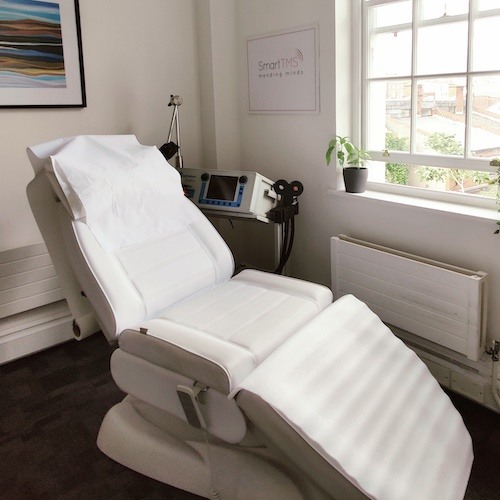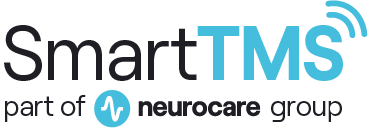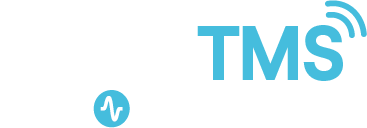How does TMS compare to tDCS?
January 23, 2025 - Smart TMS

In the ever-evolving field of mental health and neurological treatment, non-invasive brain stimulation techniques have gained significant momentum. Two of the most widely studied methods are Transcranial Magnetic Stimulation (TMS) and Transcranial Direct Current Stimulation (tDCS). Both techniques have been investigated for their efficacy in treating conditions such as depression, anxiety, insomnia, OCD, chronic pain etc. However, a closer look reveals that while both approaches have their merits, emerging evidence points out that TMS is potentially a more effective and reliable option. This article explores the mechanisms, clinical evidence and comparative evidence of TMS and tDCS, highlighting why TMS is often the superior choice.
methods are Transcranial Magnetic Stimulation (TMS) and Transcranial Direct Current Stimulation (tDCS). Both techniques have been investigated for their efficacy in treating conditions such as depression, anxiety, insomnia, OCD, chronic pain etc. However, a closer look reveals that while both approaches have their merits, emerging evidence points out that TMS is potentially a more effective and reliable option. This article explores the mechanisms, clinical evidence and comparative evidence of TMS and tDCS, highlighting why TMS is often the superior choice.
How do TMS and tDCS work?
TMS uses rapidly changing magnetic fields to stimulate specific areas of the brain. By delivering pulses to the cerebral cortex, TMS induces small electric currents that either excite or inhibit neuronal activity, depending on the frequency used. High-frequency TMS (e.g., 10 Hz) is excitatory, while low-frequency TMS (e.g., 1 Hz) is inhibitory. The mechanisms involve changes in synaptic efficacy through processes like long-term potentiation (LTP) and suppression (LTD). Additionally, TMS can boost brain chemicals such as the brain-derived neurotrophic factor (BDNF) which supports neuron health and improves functional connectivity among brain circuits.
tDCS delivers low-intensity electrical currents (1-2 mA) through electrodes placed on the scalp. The current flows between an anode (excitatory) and cathode (inhibitory), modulating neuronal activity in targeted brain regions. Unlike TMS, which directly induces action potentials, tDCS modulates neuronal excitability more subtly. It is often marketed as a portable, home-use device (e.g., Flow), requiring daily sessions over several weeks.
Clinical Evidence
Depression
TMS is highly effective in treating depression, particularly in treatment-resistant cases. A meta-analysis by Mutz et al. (2019), reviewed 113 randomised trials involving 6,750 patients and found that patients receiving bilateral TMS were almost five times more likely to experience improvement compared to those receiving sham treatments. Similarly, Brini et al., (2023) analysed 29 systematic reviews and reaffirmed TMS’ safety and efficacy, with remission rates of up to 55% in treatment-resistant depression cases.
While tDCS has shown promise, its efficacy is less robust. Brunoni et al. (2017), conducted a double-blind trial comparing tDCS with the antidepressant escitalopram. tDCS reduced depression scores more than placebo but was inferior to escitalopram. A recent review by Kumpf et al. (2023) highlighted safety concerns in home-based tDCS, such as skin irritations and inconsistent results leading to premature study termination.
Anxiety
A systematic review by Cox et al. (2022) involving 13 studies (N=677) found TMS to significantly reduce symptoms of generalised anxiety disorder (GAD), with a standardised mean difference (SMD) of 1.45 compared to sham treatments. Clinical audits have shown remission rates of nearly 50% for anxiety patients treated with TMS.
Evidence for tDCS in anxiety is mixed. While some studies suggest minor improvements, De Lima et al. (2019) found no significant effect of tDCS on anxiety symptoms in a randomised trial. A review by Stein et al. (2020), concluded that tDCS may modulate anxiety in certain subgroups but lacks consistent evidence.
Insomnia
TMS has demonstrated significant improvements in sleep quality. A meta-analysis by Sun et al. (2021) of 36 trials (N=2357) showed a marked reduction in Pittsburg Sleep Quality Index (PSQI) scores, with no severe adverse events reported. In comparison, Bakhshayesh et al. (2023) explored tDCS for traumatic brain injury (TBI)-induced insomnia and found modest improvements in sleep quality. However, the effects were less pronounced compared to TMS studies (Sun et al., 2020)
Chronic Pain
TMS is also effective in reducing chronic pain, including fibromyalgia and neuropathic pain. and Su et al. (2021) found TMS to significantly reduce pain scores and improve quality of life, with effects persisting for weeks post-treatment. Pinto et al. (2018) reviewed tDCS for chronic pain and concluded that while some studies report small-to-moderate effects, the evidence is inconsistent. Combining tDCS with behavioural therapies may enhance its utility but requires further research.
Safety and Practicality
TMS is delivered in a clinical setting, ensuring professional oversight and minimising risks. Common side effects include mild scalp discomfort and headaches, while seizures are extremely rare (~1 in 50,000 stimulations). Although marketed as a safe, home-based alternative, tDCS poses unique challenges. Kumpf et al. (2023) reported skin irritation and device-related issues in unsupervised settings. The lack of professional monitoring increases the risk of improper use and inconsistent results.
TMS’s efficacy extends beyond depression and anxiety. It has been successfully applied to: PTSD, addiction and neurological disorders. TMS has also shown benefits in stroke recovery and motor rehabilitation. In contrast, tDCS research remains limited in scope and scale for these applications, often producing mixed results.
Why TMS Is the Better Option
While tDCS offers accessibility and affordability, its inconsistent efficacy, safety concerns, and the requirement for self-administration limit its appeal. TMS, on the other hand, provides:
- Proven Efficacy – Backed by robust clinical trials and meta-analyses.
- Safety - Delivered under professional supervision.
- Durability - Long-lasting effects across multiple conditions.
- Convenience - Outpatient sessions with no post-treatment downtime.
For individuals seeking reliable, evidence-based treatment, TMS emerges as the gold standard in non-invasive brain stimulation.
Conclusion
As mental health treatments advance, the importance of tailoring interventions to individual needs cannot be overstated. TMS offers a clinically proven, safe, and effective option for patients, particularly those with treatment-resistant conditions. While tDCS holds potential, it remains a supplementary option rather than a standalone solution.
Written by Weronika, Edinburgh Practitioner
References
- Brunoni, A. R., Moffa, A. H., Sampaio-Junior, B., Borrione, L., Moreno, M. L., Fernandes, R. A., Veronezi, B. P., Nogueira, B. S., Aparicio, L. V. M., Razza, L. B., Chamorro, R., Tort, L. C., Fraguas, R., Lotufo, P. A., Gattaz, W. F., Fregni, F., & Benseñor, I. M. (2017). Trial of Electrical Direct-Current Therapy versus Escitalopram for Depression. New England Journal of Medicine, 376(26), 2523–2533. https://doi.org/10.1056/nejmoa1612999
- Brini, S., Brudasca, N., Hodkinson, A., Kaluzinska, K., Wach, A., Storman, D., Prokop-Dorner, A., Jemioło, P., & Bala, M. (2022). Efficacy and safety of transcranial magnetic stimulation for treating major depressive disorder: An umbrella review and re-analysis of published meta-analyses of randomised controlled trials. Clinical Psychology Review, 100, 102236. https://doi.org/10.1016/j.cpr.2022.102236
- Cox J, Thakur B, Alvarado L, Shokar N, Thompson PM, Dwivedi AK. Repetitive transcranial magnetic stimulation for generalized anxiety and panic disorders: A systematic review and meta-analysis. Ann Clin Psychiatry. 2022 May;34(2):e2-e24. doi: 10.12788/acp.0050. PMID: 35550035.
- De Lima, A. L., Braga, F. M. A., Da Costa, R. M. M., Gomes, E. P., Brunoni, A. R., & Pegado, R. (2019). Transcranial direct current stimulation for the treatment of generalized anxiety disorder: A randomized clinical trial. Journal of Affective Disorders, 259, 31–37. https://doi.org/10.1016/j.jad.2019.08.020
- Kumpf U, Palm U, Eder J, Ezim H, Stadler M, Burkhardt G, Dechantsreiter E, Padberg F. TDCS at home for depressive disorders: an updated systematic review and lessons learned from a prematurely terminated randomized controlled pilot study. Eur Arch Psychiatry Clin Neurosci. 2023 Oct;273(7):1403-1420. doi: 10.1007/s00406-023-01620-y. Epub 2023 May 16. PMID: 37191697; PMCID: PMC10185954.
- Mutz, J., Vipulananthan, V., Carter, B., Hurlemann, R., Fu, C. H. Y., & Young, A. H. (2019). Comparative efficacy and acceptability of non-surgical brain stimulation for the acute treatment of major depressive episodes in adults: systematic review and network meta-analysis. BMJ, l1079. https://doi.org/10.1136/bmj.l1079
- Pinto CB, Teixeira Costa B, Duarte D, Fregni F. Transcranial Direct Current Stimulation as a Therapeutic Tool for Chronic Pain. J ECT. 2018 Sep;34(3):e36-e50. doi: 10.1097/YCT.0000000000000518. PMID: 29952860; PMCID: PMC6105447.
- Sun, N., He, Y., Wang, Z., Zou, W., & Liu, X. (2020). The effect of repetitive transcranial magnetic stimulation for insomnia: a systematic review and meta-analysis. Sleep Medicine, 77, 226–237. https://doi.org/10.1016/j.sleep.2020.05.020






